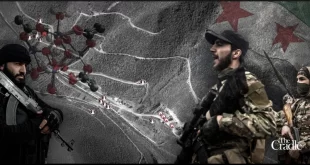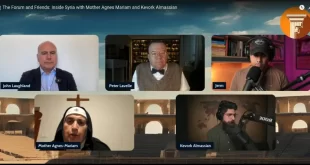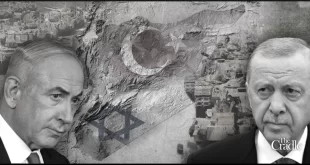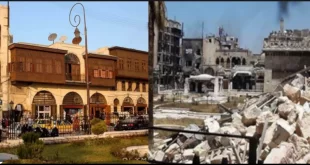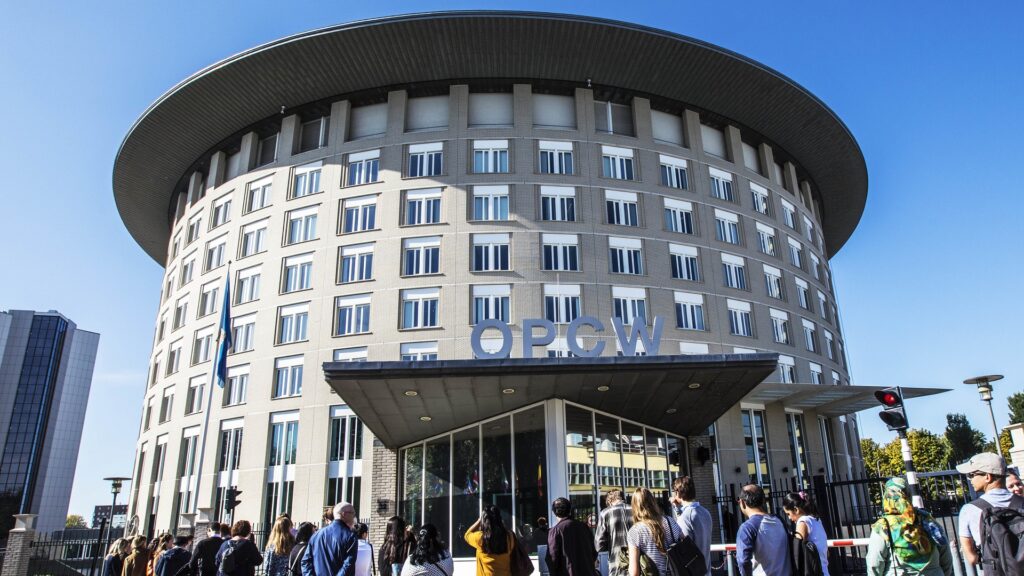
The following article, by Aaron Mate, was originally published at The Grayzone:
In its probe of an alleged chemical attack in Syria, the OPCW shunned the critical investigative area of forensic pathology and censored a recommendation to pursue it. The Douma killings remain unsolved.
(This is part two of a Grayzone series. Read part one here.)
In its probe of an alleged chemical attack in the Syrian city of Douma, the Organisation for the Prohibition of Chemical Weapons (OPCW) shunned the critical investigative area of forensic pathology, leaks obtained by The Grayzone reveal.
Forensic pathology – the study of the cause and manner of death – could have helped solve the mystery surrounding dozens of civilians who died in Douma. Instead, senior OPCW officials thwarted any attempt to deploy the science and suppressed an internal recommendation that it be pursued.
During the probe’s first weeks, leaked emails show, a senior OPCW official turned down a proposal to consult with a forensic pathologist at the Netherlands Forensic Institute (NFI), a top laboratory based nearby in The Hague. Denied this critical input, the Douma team’s original report then called for “an expert in forensic pathology… to provide an authoritative assessment.”
But this identified need was censored, along with findings that undermined allegations of a chemical attack. And after the original team was sidelined, the OPCW ignored forensic pathology for the remainder of the investigation.
In doing so, the OPCW leadership created a significant investigative void in the chemical watchdog’s inquiry into the Douma massacre.
On April 7, 2018, gruesome photos and videos emerged from Douma, which was then occupied by the Saudi-backed jihadi militia Jaysh-al-Islam and under bombardment from Syrian army forces attempting to retake control. Dead civilians, including infants, were filmed strewn in piles across the floors of an apartment building. Many could be seen with copious amounts of frothing oozing from their mouths and noses. Several displayed unusual skin discoloration around the eyes, and victims were filmed lying in unnatural positions. A gas cylinder was filmed above a crater on the top floor, which insurgent-tied groups claimed was evidence of a Syrian army chemical attack. Without waiting for an international inquiry or UN authorization, the US, UK, and France bombed Syria in purported retaliation.
In March 2019, the OPCW seemingly vindicated allegations of Syrian government guilt. After an almost eleven-month probe, the OPCW issued a final report which claimed that there were “reasonable grounds” to believe that a chlorine gas attack had taken place.
Although that finding effectively accused Syrian forces of dropping the cylinders seen in Douma, the report included a conspicuous admission. “It is not currently possible,” it said, “to precisely link the cause of the signs and symptoms” of the Douma victims “to a specific chemical.”
This overlooked phrase exposed a critical forensic gap: the OPCW was simultaneously claiming that chlorine gas cylinders were likely dropped on the Douma victims while acknowledging that it was “not currently possible” to determine that chlorine gas had actually killed them.
A trove of leaked documents and emails soon explained the discrepancy. The OPCW team that investigated the Douma incident had written a report that — contrary to the organization’s public claims — in fact found no evidence of a chemical attack. But this original report was doctored and suppressed in a cover-up of findings that undermined allegations of toxic gas use.
As The Grayzone reported in the first installment of this series, among the most pivotal acts of suppression was the erasure of expert German toxicologists who had unequivocally ruled out chlorine gas as the cause of death in Douma. The final report’s claim that it is “not currently possible” to connect the deaths to the alleged murder weapon was thus a deceitful sleight of hand to conceal the fact that experts sought out by the OPCW had explicitly determined that it was not chlorine gas.
The German toxicologists were not the only experts rebuffed by the OPCW’s corruption of science. This account of the shunning of forensic pathology in the nearly year-long Douma investigation is based on OPCW sources, documents, and previously undisclosed leaked emails.
The OPCW did not respond to The Grayzone’s emailed questions.
In Douma, puzzling symptoms called for outside expertise
When videos of civilian casualties in Douma first surfaced, the victims’ visible symptoms puzzled the OPCW team. Several corpses displayed bodily features that seemed out of place. For example, some showed a pronounced yellow-orange skin discoloration around the eyes that the OPCW inspectors found unusual for chemical poisoning. When two OPCW Designated Laboratories reported back that no traces of nerve agents or their degradation products had been found at the scene, the puzzle was even more confounding: how to explain the glaring incongruencies, like profuse frothing and wet hair apparent on many victims?
Profuse sweating, like the frothing, is a classic symptom of nerve agent poisoning. But because the OPCW’s labs turned up no trace of nerve agents like sarin, exposure to these chemicals could not be invoked to explain the dampened faces and wet hair.
If a nerve agent was not the culprit, then one possible explanation for the wet hair was that the victims’ blackened faces had been washed by someone at the scene. In the videos and photos from the apartment building – named in OPCW documents as “Location 2” – a bucket of blackened water and dirty wet rags could be seen on the floor close to the victims.
The presence of these objects could clearly be construed as a sign of a staged incident by insurgents on the ground – a hypothesis that the inspectors now needed to consider. One piece of evidence that could help resolve the incongruence would be the victims’ time of death.
If the time of death could be established, even approximately, at before or after the time of the alleged chemical attack, it would have provided crucial evidence in solving the mystery. If the victims were determined to have died significantly before the time of the alleged attack, this would naturally raise serious questions about the credibility of witnesses – all supplied by insurgent-tied groups – who claimed that a chemical attack occurred. It could even potentially answer the fundamental question of whether the victims had indeed died of chemical poisoning.
The task was complex, but paramount.
Working tirelessly for weeks, the OPCW inspectors examined in detail hundreds of photos and videos for clues of how and when the victims had died. This included an extensive analysis of the meta-data of the video and photo evidence supplied by witnesses (see Original Report, para 7.68-7.69).
But when it came to analyzing the victims’ visible features, the inspectors found themselves at a disadvantage. The Douma team of chemists, chemical engineers, even paramedics lacked competency in pre- and post-mortem determinations to fully rationalize what it was seeing. The OPCW, in fact, lacked any in-house capability in forensic science, particularly forensic pathology – the specialist knowledge needed for such authoritative assessments.
Forensic pathologists are specially trained physicians who examine the bodies of people who died suddenly, unexpectedly, or violently. They are responsible for determining the ultimate and immediate reasons for the cessation of life and manner of death, whether homicide, suicide, accidental, natural or unknown. An important part of their work is to determine when the victim died, or Time Since Death (TSD).
Generally, forensic pathologists would have physical access to the corpses. With the Douma victims, that was not possible. Members of the insurgent-linked, US-funded organization known as the White Helmets claimed to have buried the casualties the day after the alleged attack. Weeks later, the OPCW decided not to attempt to conduct exhumations, as “the risk of not finding substantive evidence of the alleged attack was now considered high,” the original report said.
Fortunately for the investigation, Douma was unique among the many alleged chemical attacks inside Syria. It was the first OPCW Fact-Finding Mission (FFM) in which inspectors were able to reach the site of the incident to investigate. Extensive video footage of the victims was also attained, both shortly after the alleged attack, and the following day when corpses were carried or moved about. Many of the criteria that are important for expert pathologists in assessing TSD such as livor mortis, rigor mortis and corneal opacity could be observed in these videos up to about 15 hours after the alleged deaths.
Fortunately for the Douma team, an eminent forensic laboratory was located near the OPCW’s headquarters in the Hague.
“We need specialist help at this stage”
Even before traveling to Syria for the mission, Dr. Brendan Whelan, the team’s scientific coordinator and chief author of the original report, began closely collaborating with a senior OPCW scientist. This scientist, though not a member of the Douma team, was responsible for the organization’s Scientific Advisory Board, a special independent body comprised of international, eminent experts to advise the OPCW on key scientific matters.
Whelan’s colleague was a prolific source of scientific information, with access to extensive literature and a world-wide network of experts from the field of chemical weapons. The two OPCW veterans shared a conviction that the Douma investigation should be solidly grounded in scientific principles, evidence, and expertise.
Douma was the first FFM that either Whelan or his colleague had been involved with. Not coincidentally, it was also the first investigation where an extensive scientific bibliography had ever been cited as a basis for its report. In fact, one senior OPCW director told Whelan in writing that his efforts contributed to “a more professional, transparent and sound fact-finding mission.”
Over the course of their collaboration, Whelan and his colleague sought out forensic pathologists who could help the inspectors better understand the videos of the deceased victims.
On May 31st, a promising opportunity materialized. In one of many email exchanges about scientific literature, the senior scientist offered to connect Whelan with a forensic pathologist from the Netherlands Forensic Institute (NFI), a leading forensic laboratory located nearby in The Hague.
“I can put you in touch with a forensic pathologist at NFI,” the senior scientist wrote. “Would you like me to inquire? Might be informative for quite a bit of knowledge we may be lacking. Please advise.”
Whelan, aware now that the inspectors were at the limits of their expertise in this area, was excited about the possibility. Forensic pathologists are not easy to come by, so the invite was enthusiastically received.
“I agree totally. We need specialist help at this stage. It would be great to get in touch,” Whelan wrote.
But a final decision, he added, would have to come from the senior official overseeing the Douma mission.
“Let me just get the green light from the team leader. Will get back to you tomorrow.”
The scientist, clearly supportive with getting scientific literature for the investigation, waited for instructions.
Whelan misjudged. When he approached the team leader with the senior scientist’s offer, his enthusiasm was not reciprocated. Instead, Whelan was met with an inexplicable reluctance. Despite the urgency of finalizing the investigation and getting to the bottom of how the 40-plus civilians perished in Douma, the team leader rejected any immediate expert support.
“I spoke with the team leader, and he said that maybe later,” Whelan reported back to his colleague. Clearly disillusioned, he added with resignation: “Thanks for the offer, it seemed like an excellent opportunity.”
Shunning of expertise leaves Douma murders unsolved
Three weeks after a disappointed Whelan was forced to reject his colleague’s offer, he and other team members completed the Douma mission’s Original Report. That report, previously disclosed leaks show, was promptly censored and doctored by senior OPCW officials, who inserted unsupported claims of chlorine use as a weapon. “The team has sufficient evidence at this time to determine that chlorine, or another reactive chlorine-containing chemical, was likely released from cylinders,” the doctored report claimed, without any factual basis.
A hurried effort to publish the doctored version was stopped in its tracks when Whelan discovered the deception and wrote a last-minute email of protest.
The Original Report, later published by Wikileaks, shows clearly that no specialist expertise in pathology had been brought in up to that stage. It also demonstrates that the inspectors identified the science as a glaring need. The report noted the importance of determining the “time since death” of the victims, and understanding the unusual features like the discoloration around the eyes and the sweating, which seemed not to be related to the alleged poisoning. Accordingly, expertise in forensic pathology was singled out as a pending issue:
Although many of the bodies in Location 2 present signs of rigor mortis, it is difficult to determine from the video the time of death. To establish this and the origin of certain features identifiable on many of the bodies, the team considers that an expert in forensic pathology would be required to provide an authoritative assessment. (Original Report, para 7.88)

But despite the original report’s recommendation of this “authoritative assessment”, the OPCW’s final report, issued on March 1 2019, made clear that forensic pathologists were not consulted during the intervening eight months. The final report provided no explanation as to why not, or if any attempts had been made to do so.
Because no forensic pathologists were engaged, the issues that the original team had identified remained unresolved. To seemingly make up for the absence of forensic expertise, the final report engaged in unfounded speculation.
“The presentation of wet hair in an otherwise dry environment is difficult to assess and is possibly due to profound diaphoresis shortly before death,” the final report speculated (para 8.102).
But this statement offered no explanation for why there might be profound sweating shortly before death – a symptom inconsistent with exposure to chlorine gas, the cause of death implied by the final report. The presence of the bucket of dirty water and the wet rags nearby the victims went unmentioned.
Tellingly, the final report also acknowledged that it was leaving critical issues unresolved. Commenting on the important and possibly very consequential discoloration around the eyes of many victims – which the inspectors had noted in the original report – the final report confirmed that “such periorbital discolouration is not associated with any specific known toxic exposure,” and noted that “to determine whether it [the discoloration] is due to a physiological response to exposure to a toxic substance or simply post-mortem changes would require additional steps,” (para 8.101).
The begging question then is why those crucial “additional steps” such as consulting with specialists in post-mortem changes, like a forensic pathologist were not taken in the almost eleven months that it took to complete the investigation, despite the enormous significance of resolving the unanswered questions about the dead victims.
The shunning of expertise in forensic pathology was not just a lost opportunity for a scientific investigation. For family members of the Douma victims, it has meant that closure for the cruel deaths of their loved ones at Location 2 might never be obtained.
Any investigative body probing the Douma incident has the professional and moral obligation to exhaust every possibility, scientific or otherwise, to determine precisely how the victims of that horrific event died on April 7, 2018.
The OPCW’s leaked documents detail how the original team undertook that task until they were censored and sidelined. By suppressing the team’s findings and insulating them from forensic expertise that could have helped uncover the truth, the OPCW leadership not only engaged in scientific sabotage, but has left the murders of the Douma victims unsolved.
In the absence of any answers from the OPCW leadership, the exclusion of forensic pathology from the Douma investigation raises the question: were they afraid of arriving at an inconvenient finding?
 Syria Support Movement solidarity with the Syrian people
Syria Support Movement solidarity with the Syrian people





